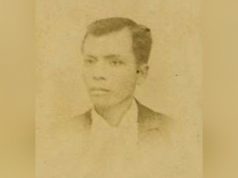President Rodrigo Duterte’s declaration of Emilio Aguinaldo Day on March 22 was criticized due to the many controversies linked to the country’s first president.
Duterte signed Proclamation 621 last week that declared March 22, 2019 as the commemoration of Aguinaldo’s 150th birth anniversary.
He designated the National Historical Commission of the Philippines as the lead agency “to plan, coordinate and implement effectively all programs, projects and activities relative to this milestone event.”
[A] Pres. Rodrigo Duterte, thru Proc 621, declared March 22, 2019 as Emilio Aguinaldo Day to commemorate his 150th birth anniversary. pic.twitter.com/ivRNcg8z8J
— Rodrigo R. Duterte (@RRD__Davao) November 12, 2018
For Duterte, Aguinaldo symbolized the country’s “desire” to be independent, self-reliant and free from oppression.
“The State recognizes the necessity to rekindle the Filipino spirit through the lessons of history and encourages every citizen to emulate and honor our forefathers,” part of the proclamation read.
It is unclear if March 22 will be a non-working holiday or a special holiday.
Criticisms and support
The new historical occasion, however, drew flak among many Filipinos, who described him as a traitor to the country and a “trapo”—short for traditional politician or corrupt official.
Some people attributed their impressions on Aguinaldo to Jerrold Tarog’s award-winning biopic “Heneral Luna” in 2015.
someone: "emilio aguinaldo"
my pre-henlu self's first thought: oh the first president of the philippines
my post-henlu self's first thought: pic.twitter.com/V16hPerRnk
— neil (@mujiwastesink) November 12, 2018
One Reddit user wrote in an online discussion of it that Duterte is starting to “erode history” with the legislation.
“I see what Duterte is doing. He is eroding our sense of history and confusing the narrative of our march to complete nationhood. Duterte’s mission for his Chinese master is to utterly break us as a nation,” the user said.
Supporters, meanwhile, said that the celebration is a worthy honor to the revolutionary leader.

Aguinaldo deserved a larger place in history, artist Eliseo Silva pointed out, but his name has been shrouded in controversy.
“The habiliments of a traditional hero suited him ill. He was shy, prudent to a fault and remarkably unassertive. But he had one shining virtue: He had a will of iron in his undeviating pursuit of the ideals of his people,” Silva said.
Others noted that national heroes should not be depicted with nuanced and not as if they were saints.
none of the people back in the revolution were "good" in the sense na walang ginawang kasalanan. almost all heroes & revolutionaries did dirty stuff. they tortured their foes (even their OWN allies) they killed & got their hands dirty so dont even get me started w 'bayani yan e!'
— ¥3L (@FILIPINlANA) November 11, 2018
This is not the first initiative to have a day of commemoration for the country’s first national leader.
In 2001, former Sen. Luisa “Loi” Ejercito Estrada, wife of Manila Mayor Joseph Estrada, once urged then President Gloria Macapagal Arroyo to make March 22 a special holiday for Aguinaldo.
Arguments against Aguinaldo
The country’s independence from Spain, the first foreign occupants, is mainly credited in some history textbooks to Aguinaldo’s leadership during the revolution.
Aguinaldo was also praised for leading the country’s freedom during the Philippine-American war in the historic Battle of Tirad Pass in 1899.
At 94, he succumbed to a heart attack at the Veterans Medical Memorial Hospital in Quezon City.
On Antonio Luna’s death
Intriguing details surrounding Aguinaldo’s heroism resurfaced recently thanks to Tarog’s film, which was the first of his historical trilogy, wherein Aguinaldo was tagged in the killing of Antonio Luna.
Then Transportation Secretary Jun Abaya, a great-grandson of Aguinaldo, countered the claims of the movie and perceived that Luna was not assassinated.
Historian Ambeth Ocampo, meanwhile, argued that Luna’s temperament may have gotten him and his men killed.
Ocampo cited a report from American newspaper The Evening News, saying it started with a spat between Luna and another officer at the Cabanatuan convent to meet with Aguinaldo, and then got attacked by the rest of the guards.
On Andres Bonifacio’s death
It was the account of acclaimed historian Teodoro Agoncillo that first suggested Aguinaldo’s hand in the murder of the Bonifacio brothers, Andres and Procopio.
In his book titled “The Revolt of the Masses: The Story of Bonifacio and the Katipunan” in 1956, Agoncillio wrote that Aguinaldo initially ordered the brothers’ banishment, but it was changed to execution with the insistence of generals Pio del Pilar and Mariano Noriel.
A letter written by Aguinaldo also confirmed that he protested the death sentence called for by Consejo Guerra. Del Pilar and Noriel, however, convinced him to proceed with the indictment.
The letter was shared by historian Xiao Chua, a professor at the De La Salle University.
Tejeros Convention
Handwritten accounts from Bonifacio’s wife Gregoria de Jesus and from Bonifacio himself showed that Aguinaldo manipulated the 1897 elections of the Katipunan at the Tejeros Estate in Cavite.
This will be later known in history as The Tejeros Convention. It was a meeting between the two rival factions of the rebel force—the Magdalo (Aguinaldo) and Magdiwang (Bonifacio).
When Bonifacio dismissed the elections that won Aguinaldo’s presidency as void, Aguinaldo then got him arrested with his brother, and later sentenced to death.
Both letters tell of a rigged election in favor of Aguinaldo’s Magdalo group.










